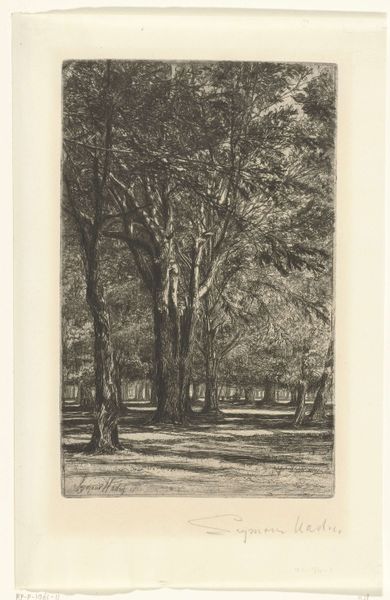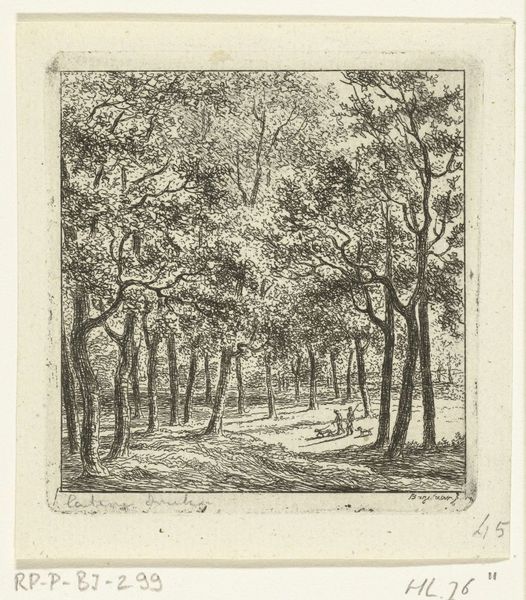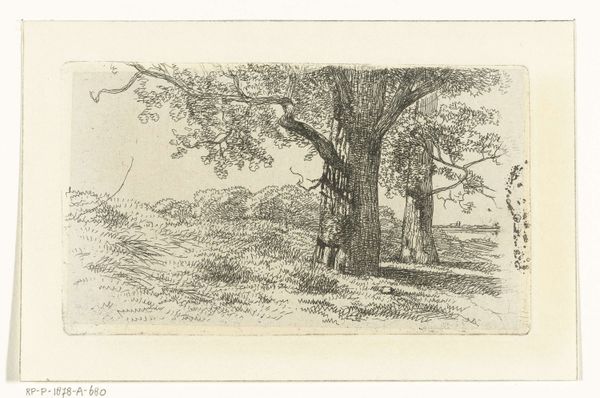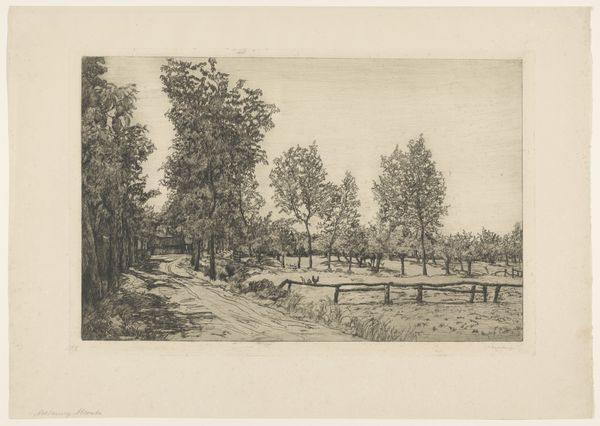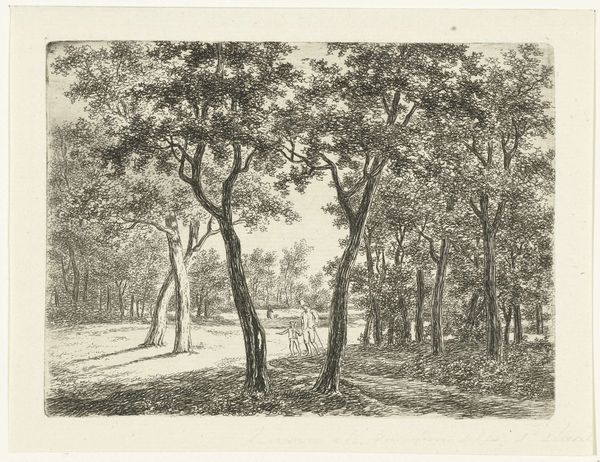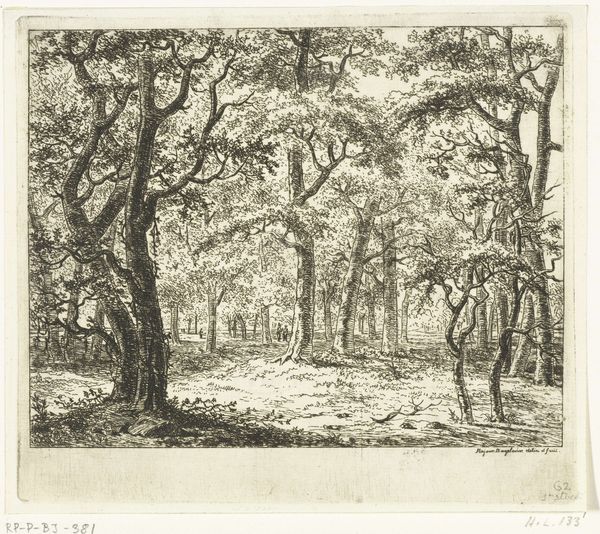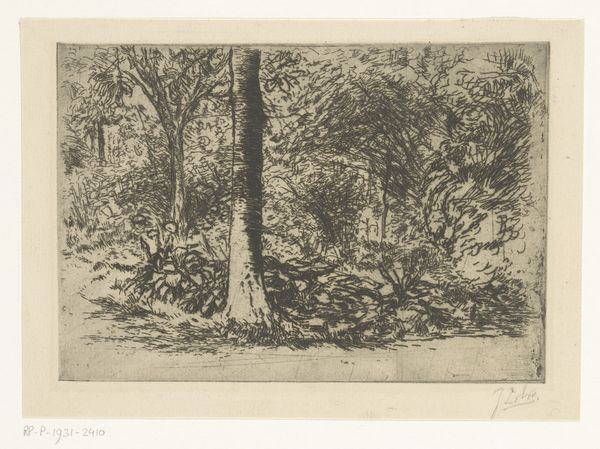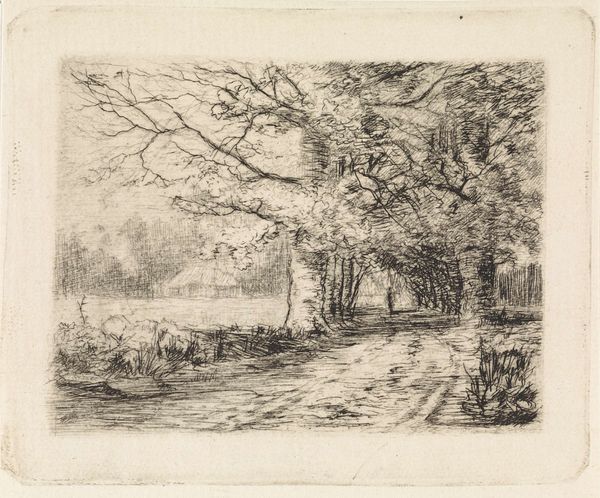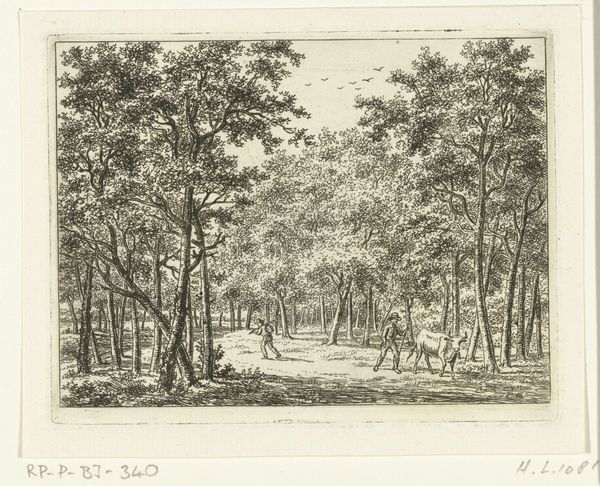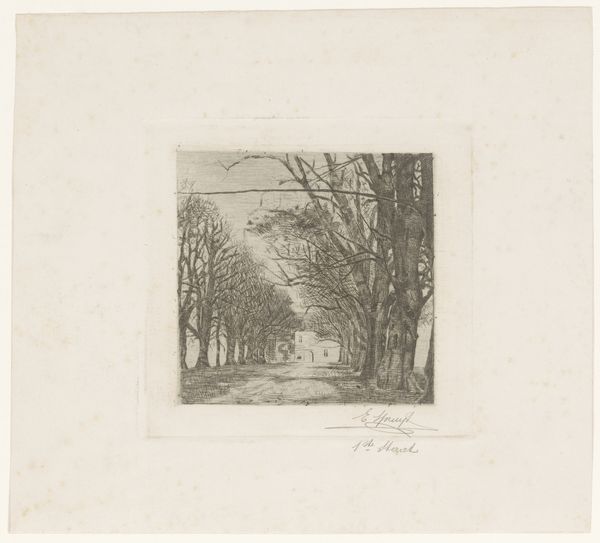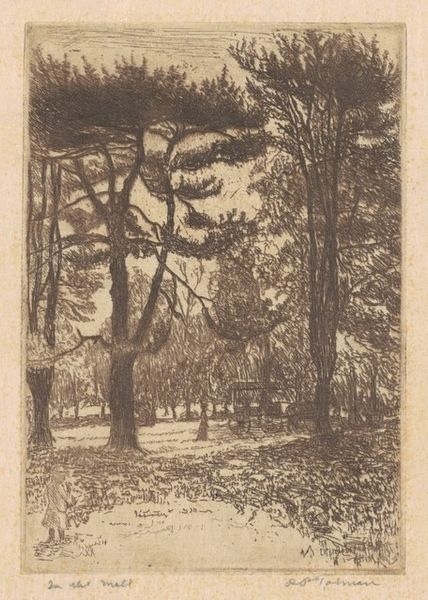
Dimensions: height 127 mm, width 200 mm
Copyright: Rijks Museum: Open Domain
Curator: This is James Abbott McNeill Whistler’s “Greenwich Park,” an etching from 1859, now held at the Rijksmuseum. It's a fairly small work, printed on paper. Editor: There's something very tranquil about this park scene. The stark lines create a beautiful stillness, broken by the few figures placed so carefully. It makes you want to sit right there, under the trees. Curator: As an etching, the process is fascinating. The plate preparation, the acid biting, the printing – each step imprints itself materially on the image. And Whistler's choice of etching rather than painting situates this work within a larger discussion of printmaking as a medium embraced for its reproducibility and accessibility. He was clearly concerned with the making of art available outside of elite circles. Editor: Exactly! The public parks, too, were becoming accessible for recreation during that period. There's something profound in the image itself - a captured moment, reflecting the shift toward a democratization of leisure that was taking shape in mid-19th century England. And who could overlook the influence that parks and gardens of this era held over many social developments that helped shaped a cultural identity. Curator: Thinking of the material conditions of production allows us to explore further afield: the social function of prints as commodities, distributed, collected, traded...The very materiality engages a broad network of consumption. We shouldn’t shy away from acknowledging these social circuits. Editor: The image speaks volumes too, though. Take for instance the placement of those lone figures, they give the viewer a sense of inclusion in their moment. Their existence within the landscape underscores that shared sense of ownership in accessing public space, with the added visual representation making its point! Curator: I still find that foreground, so vital in pulling me into the landscape. He forces you to feel the physical space he occupies, as though you're breathing the same air. Editor: And I'm reminded again that such visual renderings are a reflection on art’s continuous ability to shape perceptions and document how those perceptions evolve over time within a public setting! Curator: Agreed. "Greenwich Park" truly captures a sense of the Victorian period, through process and product. Editor: Definitely, both historically and aesthetically enriching!
Comments
No comments
Be the first to comment and join the conversation on the ultimate creative platform.
